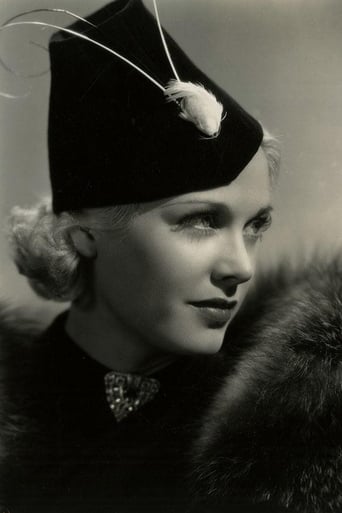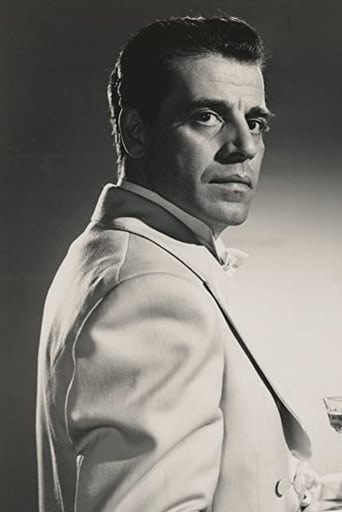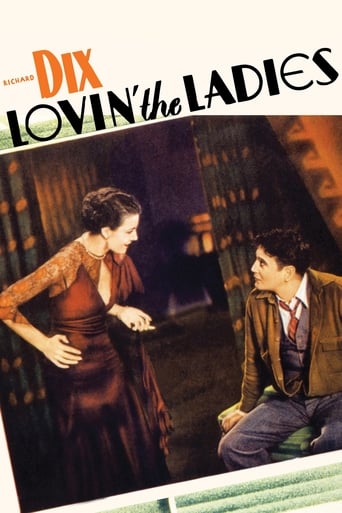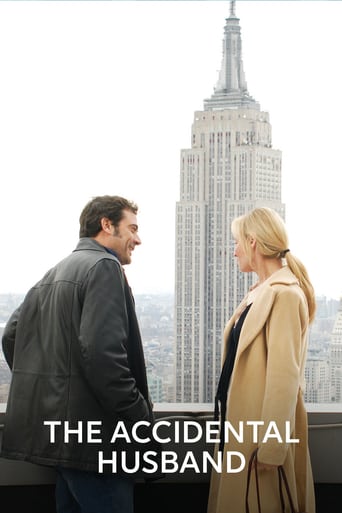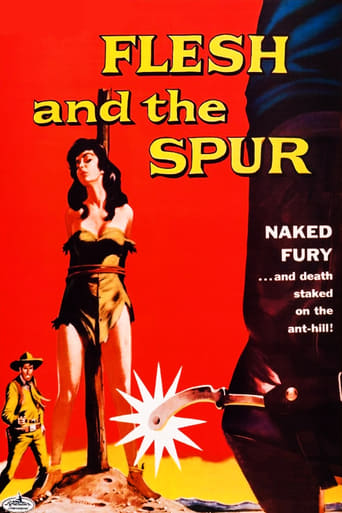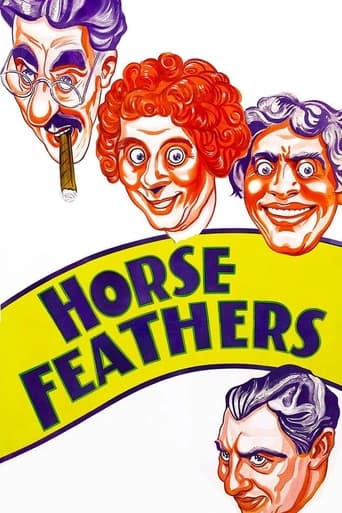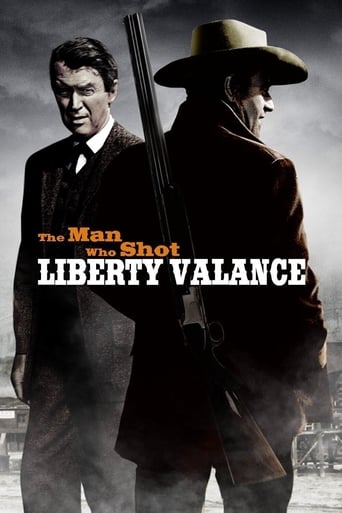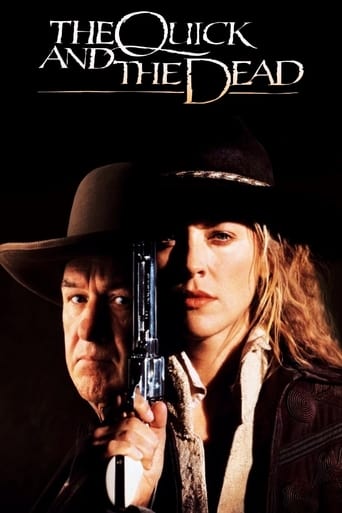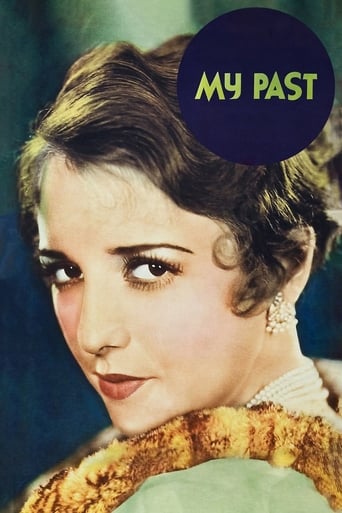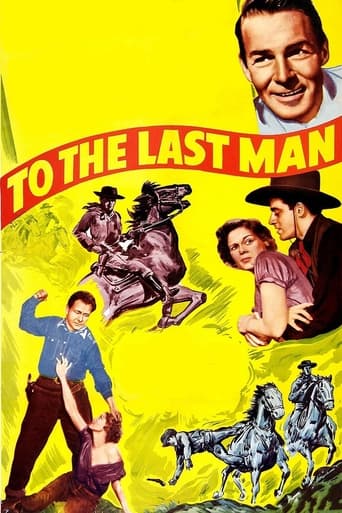
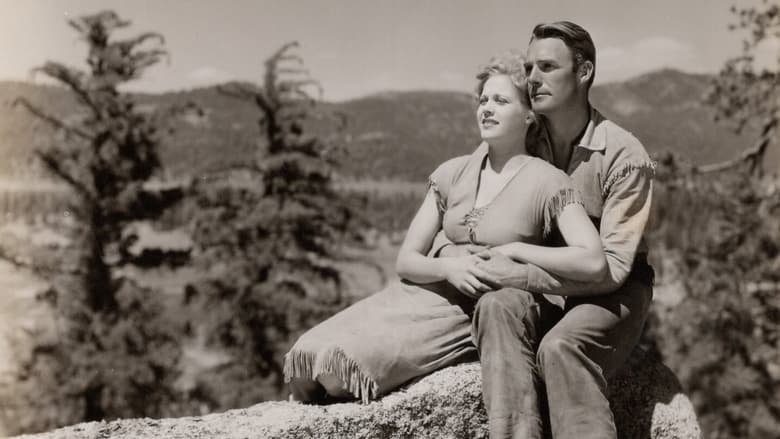
To the Last Man (1933)
In Kentucky just after the Civil War, the Hayden-Colby feud leads to Jed Colby being sent to prison for 15 years for murder. The Haydens head for Nevada and when Colby gets out of prison he heads there also seeking revenge. The head of the Hayden family tries to avoid more killing but the inevitable showdown has to occur, complicated by Lynn Hayden and Ellen Colby's plans to marry.
Watch Trailer
Cast
Similar titles
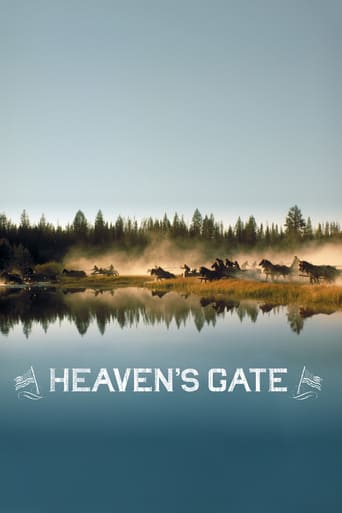
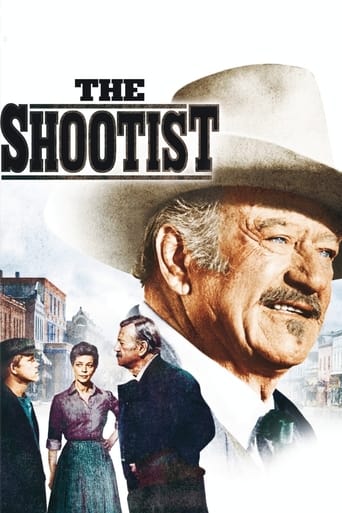
Reviews
While it is a pity that the story wasn't told with more visual finesse, this is trivial compared to our real-world problems. It takes a good movie to put that into perspective.
It's a feast for the eyes. But what really makes this dramedy work is the acting.
One of the worst ways to make a cult movie is to set out to make a cult movie.
All of these films share one commonality, that being a kind of emotional center that humanizes a cast of monsters.
This is without question a Pre-Code Western that featured two people that would become legends. Shirley Temple and Randolph Scott. What is interesting is Shirley is not credited and Scott ( like the rest of the cast) is not credited until he shows up. The main star in the movie is Esther Ralston ( Ellen Colby) who is the daughter of Jed Colby ( Noah Beery) who murdered the Grandfather of Lynn Hayden ( Scott). A couple of points:,the bad guy usually has some redeeming characteristics ( like caring about his daughter), Colby does not and spoilers ahead: He gets murdered by the even nastier Jim Daggs ( Jack La Rue ( an actor like Berry known for playing villains)). It is about a feud between the two families and what is interesting is there is no question who is good and who is bad. Something else you never see is Colby and Daggs succeed in killing all of the male adult members of the family ( except a badly wounded Lynn). It is actually Ellen that is the real heroine of the movie. She is able to fight off Daggs so that Scott can finally kill him, and They show a photo where they marry at the end. You rarely see a woman who is so obviously a white trash tomboy especially in Westerns ( even Indians are usually not shown that way). Another point is the price that both Ellen and especially Lynn pay. One finding out how creepy her father is the other losing family members. One more point. This movie that I saw on TCM, is the restored print from the Museum of Modern Art and you can see a clear difference between that and Public Domain prints. This is an excellent Western and a MUST for Scott fans. Also do not overlook the Pre-Fox ( this was filmed at Paramount) Shirley Temple who steals the scenes she was in, and Esther Ralston. 10/10 stars.
It's 1866, the year after the civil war. The Haydens and the Colbys have been a-feuding and a-fussin' for nigh on a long time now. But Pappy Hayden, having fought as a soldier, has seen enough blood for a lifetime, so he packs up with two kids and leaves Kentucky behind, a-headin' for the West, where he manages to set up a cattle ranch.Meanwhile, Pappy Colby was convicted of murder with, I guess, mitigating circumstances since his helpless victim was a Hayden. He gets fifteen years in the slams. When he gets out, he learns that the Hayden family is now out West, so he and his daughter, Esther Ralston, and one of the Colby goons, Jack La Rue, a-ride out West looking for them. Jack La Rue, by the way, sounds exactly like John Ireland if John Ireland couldn't produce a believable line of dialog.This business of feuding is kind of interesting from the point of view of cultural evolution. It's a kind of transitional legal stage, somewhere between abject savagery and written rational/legal authority. There's a sense of personal honor mixed in with it. That's where the Hatfields and McCoy's come in.Appalachia was settled in the early 1700s mostly by immigrants from the borderlands of Scotland and England, where there was very little in the way of rational law. Families settled their own arguments. That's where you get the MacDonalds versus the Campbells. All these traits -- clan feuds, duels, the culture of honor, the thirst for independence from any authority -- were brought from their source region to Appalachia and later the Wild West, where they flourished. And you wind up with Shane out-drawing the bad guys.Nope. As Grandmaw Spelvin puts it, "No Hayden don't go squealin' to the police." Thank you for your attention. Now, where were we? We're out West and the bad family, the Colbys, are trying to prod the good guys, the Haydens, into a continuance of their Kentucky feud. They do this by rustling cattle, shooting at little girls, killing the family dog. Their plan is complicated by two things. One is that, while the Hayden boys are perfectly willing to fight, Old Pappy Hayden keeps insisting that when the time comes he'll take it to the law.Another complication, which comes as no surprise whatever, is that one of the Hayden boys, Randolph Scott, and one of the Colby hoydens, Esther Ralston, fall in love at first sight. We can see why Randy is attracted to her. She's kind of good looking, as brawny in her own way as Randy is in his. But she's rough trade as well. "I ain't used to be polited at." It doesn't give much away to say that the ending resolves the feud forever.The film didn't go through a benediction by the Criterion Collection. The print is spiky and primitive and the sound is muffled. There are problems with the continuity too. For a few minutes I didn't know whether we were in Kentucky or out West. And Ralston catches Randy shaving. He puts down his razor, wipes his chin, reaches for a shirt and when he turns around he's wearing it. And I don't know how Pappy Hayden, who brought only a little boy and a little girl with him, acquired such a large family in so few years. Still --
I saw this film under the title "Law of Vengeance", with an interesting convention of introducing each character with their film credit when they first appeared on screen. It's not unusual to see early silents and even talking films show all the characters in the story before the action gets under way, but I don't think I've seen it done this way before. Which means Randolph Scott, top billed but not appearing for about the first twenty minutes, suddenly shows up as Randolph Scott portraying Lynn Hayden.Probably the best recommendation to see this film is for the players, a fairly top flight cast (perhaps in retrospect) including Scott, Buster Crabbe, Barton MacLane, Jack Larue and Noah Beery. Funny, but Beery looked more like his real life son Noah Beery Jr. before doing the fifteen year prison sentence in the story. Then suddenly he looked like a totally different actor. I'll have to go back and check that out again.The bigger surprise though might have been catching Shirley Temple in an early uncredited screen appearance. Back in my early parochial school days, it seemed we were treated to a Temple film every couple of months. Others on this board have mentioned one of the Colby bunch taking her doll's head off with a rifle shot. I thought that was bad enough, but later in the story one of the bad guys was actually going to shoot her brother when another character ruined his aim. Seems to me that was carrying a feud just a bit too far.What I don't understand is the way the picture ended. We're led to believe that most of the Hayden clan was killed in the blast that leveled the mountainside, but it seems that the Colby bunch was buried too! Then Larue's character offs the senior Colby (Beery) in order to marry daughter Ellen (Esther Ralston), which Jed Colby didn't approve of. Of course, Lynn Hayden had other plans, and in one of the more interesting finales to a final showdown you'll ever see, Hayden strategically positions a knife to defeat Jim Daggs, even though he was almost unconscious. Not a move I would recommend for a would-be hero in real life.
Real Tough Guys depicated in this movie. Great acting and good action sequences for 1933. How many movies can you see likes of Randolph Scott, Shirley Temple, John Carradine, Buster Crabbe and The General from "I Dream of Jeanie" all in one movie! Really recommend this one!

